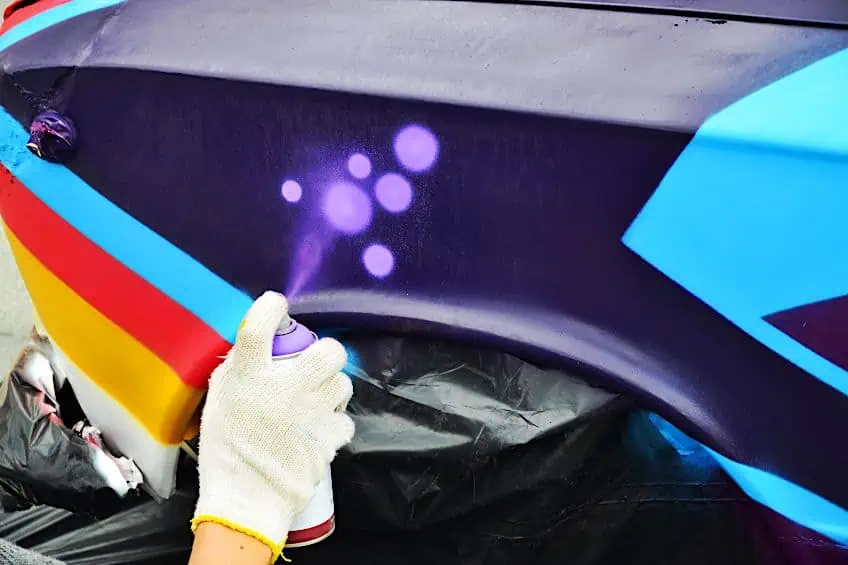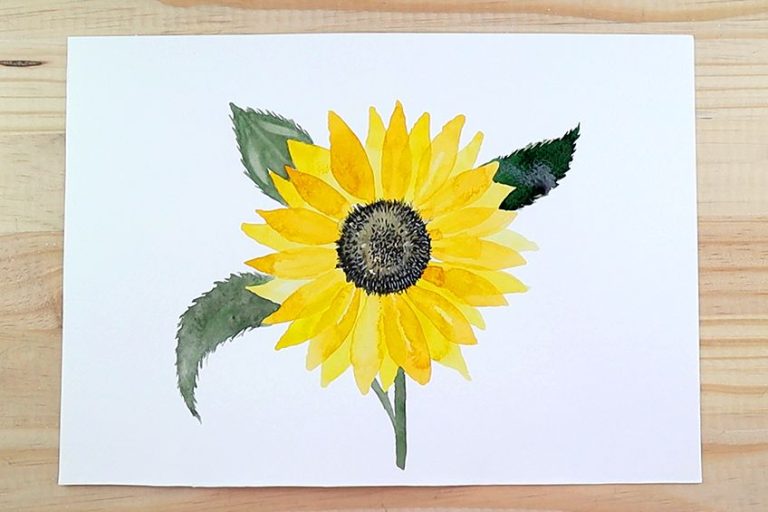Best Spray Paint for Cars – An Easy Guide to Automotive Paint Spraying
This post may contain affiliate links. We may earn a small commission from purchases made through them, at no additional cost to you.
Maybe you are thinking about spraying your car for a new look? You might want to discover if this is at all possible for a first-time do-it-yourself enthusiast. In the event you decide to jump to the challenge, you will also be looking to find the best spray paint for cars. So, before you make this big decision, let us find out what painting a car involves.
Table of Contents
Types of Car Spray Paint
To begin with this project, you should gain some knowledge about the types of car spray paint available. Automotive paint spraying is not an easy and quick job, you need to invest a lot of time and also money to do a proper job. The most important thing is to purchase the best spray paint for cars, otherwise, all the hard work will be for nothing. So, what kind of paints do you get?

Paint Stages
Let us first understand the paint stages before going into the different types of paint. When it comes to painting a car, depending on the paint you use, there are various paint stages you need to consider. This simply means that the paint you use, requires various coats of paint as well as things like primer, to make sure the paint is durable.
There are also other types of coats you can include, such as anti-corrosion undercoats.
Single-Stage Paints
These paints contain your base coat as well as your clear coat all in one and dry to a gloss finish. These usually include your enamel paints and your urethane paints. This means they are ready to use but might need to be diluted with a solvent, or what is also known as a thinner or reducer so that it can be sprayed more easily.

Although it is a single-stage paint, you will most probably need to apply a few coats. This is the best option for beginners, as it is easier to apply, and you do not have to worry about multiple paints and methods. However, these paints might not be as durable as your two-stage paints.
Two-Stage Paints
This simply means that instead of it all being in one single application, you need to apply a base and topcoat. This means applying a base coat in the color you want and then the protective, clear topcoat. In most cases, all of these paints are applied over a primer, and the number of layers will depend on how you want the finish to look.
These types of paints require an activator or hardener, which helps the paint adhere to the surface of the car.
So, you will have your primer, then your base coat, four to five topcoats, ending with three to four layers of clear topcoat. If you want to remove the paint, it will be extremely difficult due to all the layers and requires a lot more effort than single-stage paints. The primer is there to protect from rust forming. Primer also helps to create an even surface on which to paint and can cover up any imperfections before painting. Below are some of your paint types.
Water-Based Car Paints
As with all water-based paints, these are considered less toxic when compared to solvent-based paints. These paints are also applied in thin, multiple layers that provide a vibrant and smooth finish. Water-based paints are also more eco-friendly and better for your health as water is used as the delivery agent and not solvents. This is especially helpful since you have to spray the paint onto the car and those fine mist air particles can go everywhere.
Today, there are a lot more options available and you do not have to worry about the quality of the paint. There are even a few states that have banned the use of solvent-based paints and are opting for more eco-friendly options. As mentioned, water-based paints have to be applied in thinner layers, they do provide a smooth finish. The solvent-based paints, on the other hand, may develop bubbles, which can be difficult to remove.

Although the water-based paints proved a smooth finish, to get it right, you must prepare the surface properly. Because you are applying thinner layers, this could expose imperfections more easily. You must make sure to sand and then the surface must be cleaned before you begin painting. You do not want any dirt or an uneven surface to ruin your paint job.
One of the more popular choices today is your acrylic enamel or acrylic polyurethane paints that are water-based but still offer the vibrant, smooth, and durable finish of enamel paints. When it comes to acrylic enamel paints, these are budget-friendly, however, they do require a bit of preparation work.
You need to add a base coat after a primer as well as a clear topcoat, which should be able to withstand UV light.
Solvent-Based Paints
These are the first type of paints many think of when it comes to car paints. Of course, we all know that solvents are high in VOCs (volatile organic compounds) and are toxic if you breathe them in. When using these paints, you will need to be extremely careful, and you must wear a respirator mask and other protective gear.
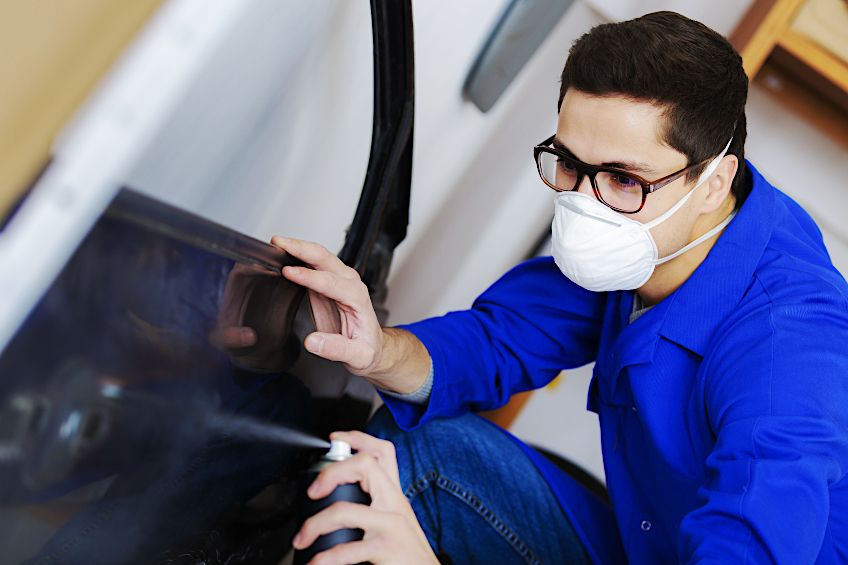
Solvent-based paints can also have three main sources including enamel paints, urethane paints, and lacquer paints. These types of paints also take longer to cure than water-based options. However, many now go for water-based options because they are non-toxic to people and the environment. Some prefer this option; however, many states have banned the use of solvent-based paints.
Lacquer Paints
This is one of the older methods of painting, and today is not used on many new vehicles. However, if you are restoring an older model vehicle, you might need to use a lacquer finish to match the original paint job. When dealing with lacquer paints, you will also need to work a bit harder at getting the same shine as the newer paint options provide. These paints are also highly toxic.
The older paints were nitro-cellulose-based, which were replaced by synthetic enamel paints.
Enamel Paints
When it comes to enamel paints, you can get two main types including your synthetic enamel and your acrylic enamel paints. The cheaper option is your synthetic enamel paints, which offer a good finish but are not as durable as your acrylic enamel options as they contain a hardener and other additives. It is simply a quick and easy paint job. Of course, your preparation of the surface is always important. Synthetic enamel paints are single-stage paint, while acrylic enamel paints can be single-stage or two-stage. The enamel paint will also need to be baked onto the car for better durability.

Urethane Paints
Urethane paints are more expensive, although it does offer a nice finish and it is easy to apply in a single stage. The paint also dries fast and offers great coverage; however, it requires more work to get the best finish. You can get urethane paint in any color you want as it can be mixed to your requirements.
Urethane paint is also UV-resistant and dries to a nice hard and durable finish, which should outlast the acrylic enamel paints.
Once done with the paint, you will have to expose the left-over paint straight away and it is extremely toxic and, therefore, not best for the environment or your health. Even if you get a water-based acrylic urethane, all urethane paint can be considered toxic, and wearing protective gear is a necessity. Below you will find a table showing the different car paints. There are various spray can products available for all of these options.
| Type of Paint | Durability | Cost | Application | Toxicity |
| Acrylic Enamel Paint | Provides a durable, hard coat | Affordable | Difficult to apply. Two-stage application | Low toxicity |
| Enamel Paint | Durable | Affordable | Synthetic enamel paints are single-stage paints | Toxic |
| Lacquer Paints | Does not last long and fades easily | One of the cheaper paints | Single-stage application dries fast but needs several coats | Highly toxic |
| Urethane Paint | Most durable and chip-resistant | Expensive | Single-stage application. Difficult to apply. A professional might be the best option | Highly toxic, acrylic polyurethane is more eco-friendly |
Automotive Spray Can Paint
This is the most inexpensive way to paint your car, however, it is not the best option as it will not last as long as the more professional jobs and is better equipped to be used as a touch-up, rather than a full-body paint application. However, if you are not looking to create a master showpiece, and you are not all that concerned about the durability of the paint, then a spray can is an option for beginners. These are also nearly all one-part paints. Most of the more professional liquid car paints can be used in a spray gun with a compressor.
Spray cans can also be used as part-specific paint, where you only paint things like the wheels or other areas of the car that will take paint. Some of these paints are specialized, for example, if you have to spray any engine parts, the paint needs to be heat-resistant, so it does not begin to peel off when exposed to high temperatures.
Car Paint Finishes
There are various types of base coats you can use on your car to get the look you want. Some are more expensive than others. Each of these finishes has its benefits and disadvantages, so you will need to decide what you want.

Metallic Finish
These are your solid colors that have some metallic powder mixed in them. These paints offer a glossier effect, and any minor damages are difficult to spot from a distance. These are more expensive than your plain solid paints, and it can be difficult to find the correct paint match if you need it. You can also get pearlescent paints, which have ceramic crystals particles included in the paint. There are quite a few colors available in this finish, however, it is more expensive than your other finishes. Minor damages can easily be hidden with this type of finish, and it provides a superior finish compared to the other options.
These paints can also be difficult to find, and any repairs are expensive and take longer to fix.
Solid Paints
These are your most common types of paint and are easy to come by. The most popular colors in this range include solid black, white, blue, and red colors. Since these paint types are easy to come by, they are also more affordable than other options. You also have simple repair options, for example, small scratches can easily be fixed with a paint pen of the same color.
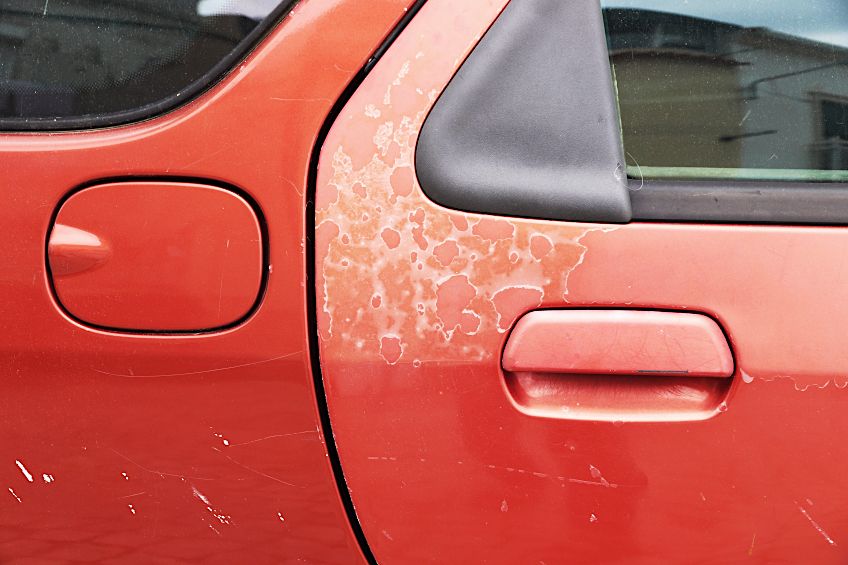
Matte Finish
These are quite expensive and add a high-quality look to the appearance of a vehicle. They usually only come in two color options, namely gray and black. The paint seems to absorb the light and offers a more muted shine that is appealing to many buyers.
Any repairs are expensive, and there is a lot of maintenance involved in keeping up appearances.
The Recommended Best Spray Paint for Cars
If you do decide to paint your car yourself, and you want to use spray paint in a can, it is possible, but you will not get the best finish as you would with a professional paint job. You might also use quite a few paint cans if you do an entire car body paint job. You also need to consider using a primer, which helps to protect from rust. The best options for spray paint cans and to save money would be if you did smaller touch-ups, no larger than about six inches. The larger the area, the worse it might look once you are done. To get a proper paint job, using a high-volume low-pressure spray gun would provide the best finish. However, this costs more for equipment, and you will need to practice quite a bit before you can do a good job. In the long run, if you want a professional spray job done, then you should pay a professional to do it. However, if you have decided to paint your car, below are a few product recommendations.

Best Acrylic Lacquer Spray Paint: DUPLI-COLOR Automotive Spray Can Paint
The Dupli-Color perfect match premium automotive paint is a spray paint that dries quickly and is made to duplicate the primary factory colors. The nozzle is designed to provide a wide spray pattern and great coverages for a smooth finish. This spray paint is great for those larger touch-ups you want to make. The paint is extremely durable, can handle heat well, and is the perfect paint for beginners. The paint will provide a protective layer that is resistant to moisture, corrosion, oils, and chemicals. The paint dries quickly in about 30 minutes but needs to cure for at least 48 hours. Once you are finished with the painting, you should use the Dupli-Color clear topcoat for even better protection.
- Easy-to-use, high-quality, fast-drying acrylic lacquer spray paint
- Features an adjustable 360-degree nozzle and a wide spray pattern
- Ideal for large touch-ups and color matching vehicle accessories
- Provides a nice gloss finish
- Easy to use
- Affordable
- Best for large touch-ups
- Not to be used for whole car paint jobs
Best Acrylic Enamel Spray: DUPLI-COLOR Premium Acrylic Enamel Spray Paint
The Dupli-Color acrylic spray paint is a multi-purpose paint that can be used on metal, wood, plastic, fiberglass, and even concrete. This is a paint and primer in a single product, and in some cases, you do not need to prepare or sand the surface. The paint is durable and offers great rust protection. The nozzle works consistently and does not spit or clog after use. If you purchase more than one can, the color also remains consistent.
- Perfect for automotive, motorcycle, and other paint jobs
- Contains and primer and paint in a single application
- No preparation or sanding needed on many surfaces
- Can be used on different surfaces
- All-in-one paint and primer
- Offers good coverage
- Durable
- Rust-resistant
- Colors might not match up to the ones you see online
Best Enamel Spray: RUST-OLEUM Enamel Spray
The Rust-Oleum protective enamel spray can be used on metal and other surfaces like wood, and concrete. This is an oil-based paint that offers a durable and protective coating that is rust-resistant. The paint dries in about two to four hours and a single can should be able to cover at least 15 square feet. The semi-gloss paint is also resistant to corrosion, chipping, and dirt. The paint does not contain UV inhibitors, so it can fade over time. You can purchase the paint in a selection of colors, so matching colors should not be too difficult.
- Resists weather damage, rust, and corrosion on all surfaces
- The oil-based formula provides a durable protective coating
- Creates a semi-gloss finish for a subtle shine on surfaces
- Affordable
- Offers superior rust protection
- Great coverage and durability
- If applied too thickly, it can wrinkle
- Does not contain UV inhibitors
How to Find the Best Car Spray Paint
There might be a few reasons you want to spray paint your car. These include saving money, car maintenance, helping to protect the car from heat and moisture, improving the resale value, or maybe you simply want to experiment and have some fun. Whatever your reasons, there are a few factors you need to look at to be able to choose the best spray paint for cars.
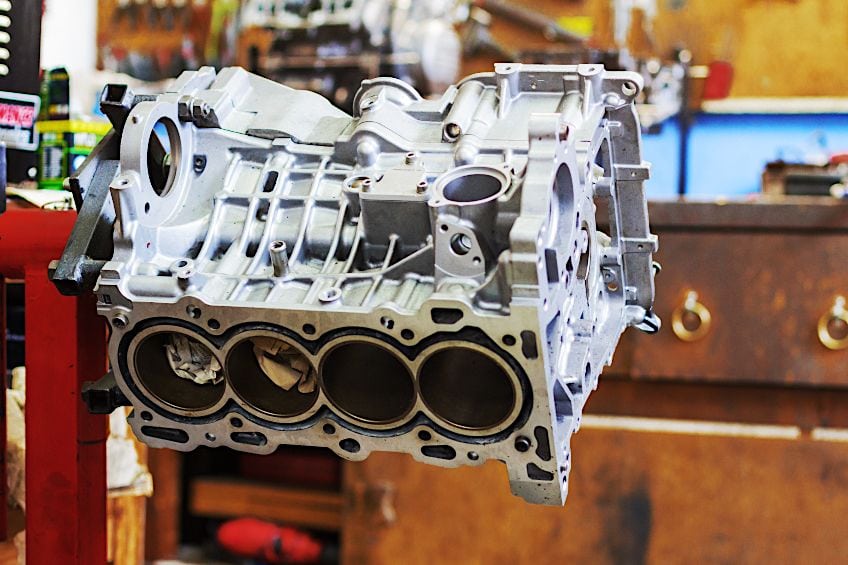
Preparation for Painting
You will need to learn and fully understand what you need to do and how you need to prepare before you even begin painting. If you have done your homework, you can go out and purchase all the materials you will need to do the best automotive paint spraying job.
This includes getting the best car spray paint, primer, topcoat, sandpaper, cleaning items, and other materials.
Primer
In most cases, you will need a primer before you apply your base coat. This helps to even out the surface and provides a better surface onto which the paint can adhere. Depending on your paint job, some paints come as a primer and paint in one, or some finishes do not require a primer or base coat and can be applied as-is.
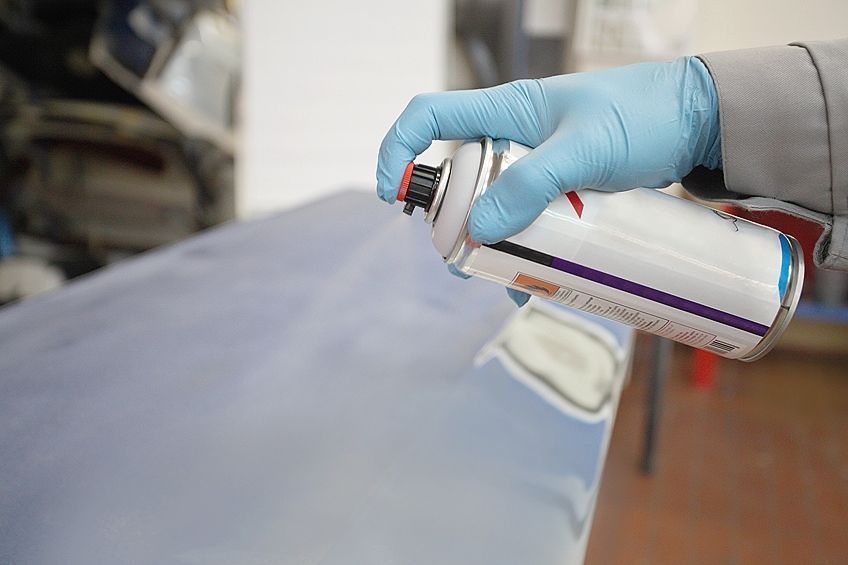
Workspace
You cannot just paint your car anywhere; you need to have a painting space to avoid any problems. You need to consider the environment, is it dusty, hot, rainy, humid, or is there a lot of sunlight. Many of the paints are hazardous to your health, so you will also need to consider protective gear.
For example, if you struggle with dust, you might want to get a paint that is fast drying.
Paint Colors
You might have to match your paint to the car, or maybe you are going to take the challenge of painting and designing a whole-body paint job. The more popular color choice is lighter colors as this does not absorb as much heat as your darker colors do, and the car remains cooler as well. White or light gray colors are also more visible at nighttime when compared to your darker colors. Your black, red, white, and blue colors are easy to find, while other limited-edition colors will be expensive and more difficult to find.
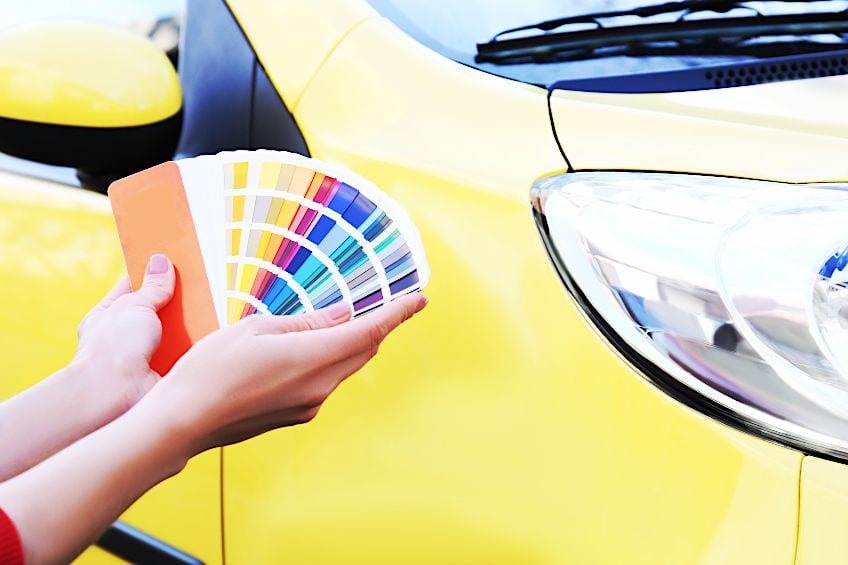
Dark paints do tend to show dirt easier, however, if you want to customize the look and add in decals like flames, then darker colors would be better. The darker colors will show up the images and design better. You can also get special effects paint colors, for example, paint that changes color according to the temperature or when viewed from different angles. Although, these paints might cost you a lot more than your conventional car paints.
Paint Finishes
There are a few paint finishes you can choose from, and each provides a different look. The main finishes you usually get are matte, gloss, semi-gloss, or somewhere in-between. You will also want to purchase a good quality paint that offers a good finish.
This finish needs to be durable and able withstand exposure to heat, moisture, and general wear and tear.
Application Method
You need a paint that can offer a consistent spray pattern, to provide a smooth and even finish. You might want to look into using a spray gun, instead of purchasing a regular spray can. This will also depend on the paint job, if it is a simple touch-up, automotive spray can paint might be the best option. However, if you want to do an entire body paint job, a spray gun might be the better option. Also, your coverage or thickness of the paint needs to be considered. Do you want a thin or thicker paint? Does the nozzle itself provide good coverage?

Drying Times
Many of the best automotive spray-paint-in-a-can products have different drying times. The drying times should be displayed on the can itself. Many of the quick-drying times are around 20 to 30 minutes. However, this is drying to the touch, and a fully cured paint can take longer, so remember to understand and know the difference.
Ultimately, there is no quick paint job, you will need some patience and it will take time to do a good job.
Versatility
You might also want to look into a paint that you can use on many surfaces including wood, plastic, concrete, and metal. A multi-purpose paint can save you money and time, although this type of paint might not provide the best finish as your specific and best car spray paint. Even if you are buying solely to paint your car, you will need to know what surface you are working on as some car parts are metal, while others can be a type of plastic.

Brands and Cost
Many good paint brands offer good quality paints. A few of these are brands like Rust-Oleum, Krylon, and Dupli-Color, amongst others. Some of these brands and paint options are more expensive than others. Your choice depends on what you are going to do with the paint, so comparing prices might be a good idea.
The two more common benefits you can look out for when it comes to the best car spray paint is a paint that offers good rust and fade resistance.
Guidelines for Automotive Paint Spraying
You can spray paint a car yourself, but you will not get the same results as you would if you sent the car in for a professional job. You might want to reconsider doing the job yourself if it is a high-end, quality car, or if you want to resell the car. Repainting your car will most likely be noticeable and may devalue your car for resale. So, if you simply want to do a touch-up or you do not mind not having that professional look, here is a basic guide on spray painting your car.
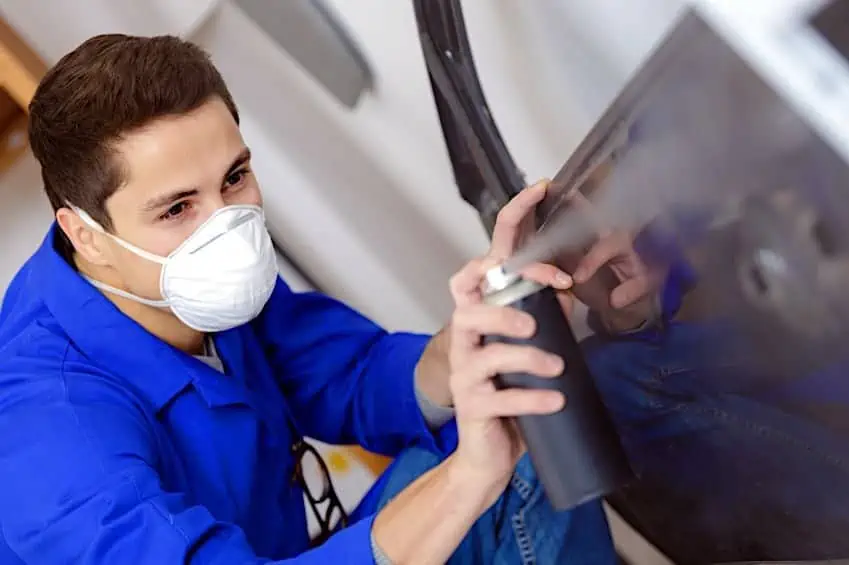
Choosing a Working Area
You need to paint in an area that is clean and mostly dust-free, painting outside is not the best idea as there might be wind, dust, and dirt flying around. The area you do choose should have good ventilation. So, it is best to create an area that is suitable, away from children and pets. Try to paint in a space that is not too cold or too warm, and do not paint in high humidity as the paint takes much longer to dry.
Make sure you have all your supplies ready, including a mask and other protective wear.
Surface Preparation
This part of the job is essential, and if not done correctly, will lead to bad results. First, you can wash your car thoroughly. Then you can dismantle most of the components you do not want to paint. For example, antenna, hubcaps, wipers, and door handles. Since most of the time a spray can is used more for touch-ups, you will only be painting a small section of the car. The rest of the car, including the windows, can be covered up with paper, plastic sheeting, and adhesive tape. You can even cover the floor to create less mess.

You can then sand the selected area using 600-grit sandpaper. Sand the entire area until all the paint has been removed and then use 1500-grit sandpaper. You should try and remove all the rust if there is any. This might take a bit of time to do, but it is an important step and should be done properly. You can clean the area to remove all the dust by using a silicone degreaser, which also helps to prepare the surface better. You then need to check and see if you need to repair any holes with putty specifically designed for cars. Smooth the surface and allow the putty to dry as instructed in the product directions. You can then smooth the surface further by sanding the repaired area with 1200-grit sandpaper.
Get rid of any dust with a cloth and wipe the area with some lacquer thinner. Be careful with the thinners as it emits fumes and is toxic.
Priming and Painting
The first coat will be your primer, which helps to seal the surface, makes the surface more even, helps the base coat of paint adhere better, and can cover up imperfections. Hold the primer spray about 30 cm away from the surface to spray and move in a horizontal, back and forth motion. Apply multiple thin and even layers, at least three coats of primer. Wait at least 15 minutes or until the primer is sufficiently dry before applying another coat of primer. You can also sand in between primer coats, and then allow it to dry for about 24 hours.
You can then sand the area again with 1200-grit sandpaper until the surface appears even and smooth. Clean using a little warm water and some soap, wipe with clean water, and then allow to dry completely.
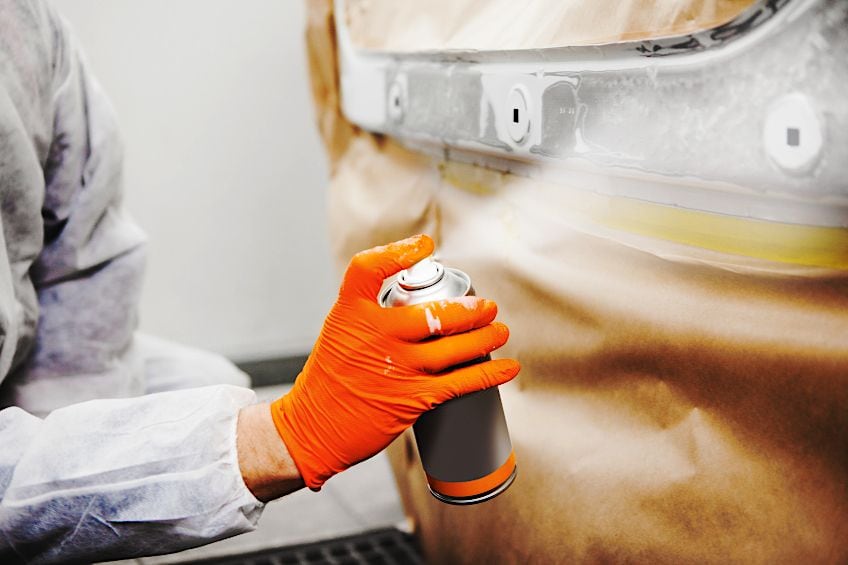
The next step is using the best automotive spray paint in a can. Again, hold the can about 30 cm from the surface after you have shaken the can for a few minutes. You can first test out the spray paint on some spare cardboard before you spray the car. This helps make sure the nozzle and paint come out as they should.
Move consistently as you did with the primer over the area you want to paint for an even finish. Depending on the finish you are going for, you can apply multiple paint layers. Wait at least 10 minutes between coats. Once you are done painting and the paint has dried, you can then add a clear topcoat. This helps to protect your paint, making it more durable, and also helps to protect it from the UV sunlight.
As you can see, painting a car is not a quick and easy job, and it is best to know when to get a professional to do the job. However, if you are up to the challenge, get the best spray paint for cars, and follow all the necessary steps and preparation, you might just be able to spray paint a car with confidence.
Frequently Asked Questions
Can You Accomplish Automotive Paint Spraying With an Aerosol Spray Can?
The best option would be to use a spray gun, but a ready-to-use spray can also do the job. A spray gun might use less paint and can offer a more even finish. While you can use the best automotive spray paint in a can, it will take a lot of paint cans to do complete body paint, so touch-ups are a better way of using the paint cans.
Does It Take Long to Paint Cars?
When a professional paints your car, it can take three to seven days to do a thorough job. If you are a beginner and have never had experience with painting cars, it will take much longer. The paint job could take you several days or more to complete.
Must You Remove the Old Paint From the Car Surface Before Repainting?
Some paints can adhere to other finishes without removing anything. So, always check what type of paint is on the car and what type of paint you are repainting with. However, it is always best to remove any old paint before repainting, to get the best finish.
What Paint Does a Professional Use to Paint Cars?
The most popular paint that offers great durability is your urethane car paint. These paints can be sprayed over any finish and surface. These paints also dry quickly but are challenging to work with, so are best applied by professionals.
In 2005, Charlene completed her wellness degrees in therapeutic aromatherapy and reflexology at the International School of Reflexology and Meridian Therapy. She worked for a company offering corporate wellness programs for several years before opening her own therapy practice. In 2015, she was asked by a digital marketer friend to join her company as a content creator, and it was here that she discovered her enthusiasm for writing. Since entering the world of content creation, she has gained a lot of experience over the years writing about various topics such as beauty, health, wellness, travel, crafting, and much more. Due to various circumstances, she had to give up her therapy practice and now works as a freelance writer. Since she is a very creative person and as a balance to writing likes to be active in various areas of art and crafts, the activity at acrylgiessen.com is perfect for her to contribute their knowledge and experience in various creative topics.
Learn more about Charlene Lewis and about us.
